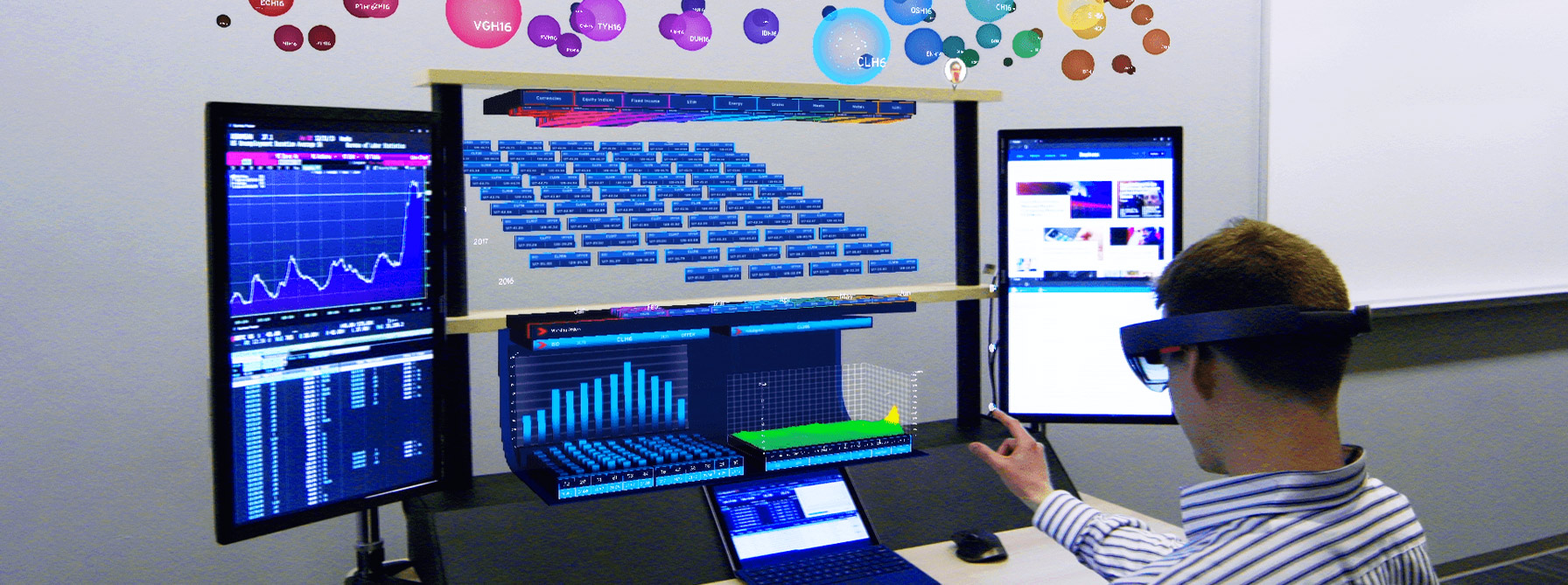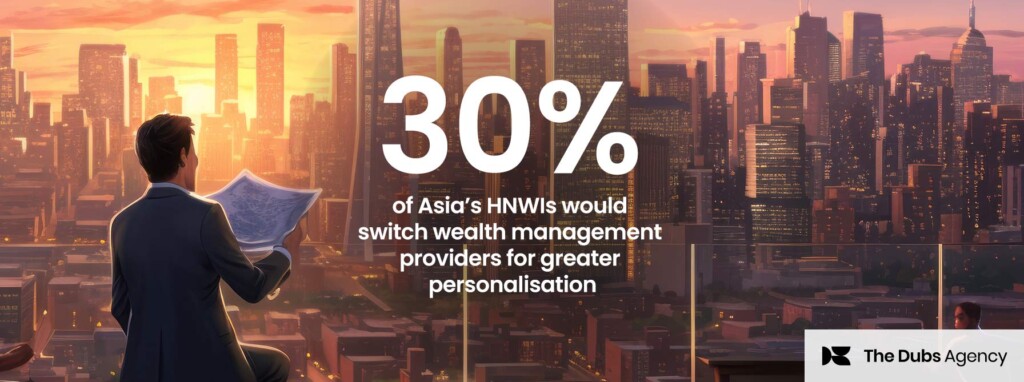If a 2016 report from Bank of America Merrill Lynch is to be believed, the combined force of virtual reality (VR), augmented reality (AR) and mixed reality (MR) could “disrupt and rule the world of technology – bridging the digital and physical worlds for the 3.5bn internet users, 3.6bn mobile broadband users, and 1.6bn with TVs globally.” It’s forecast to be a US$150bn market by 2022, if not earlier.
What does that mean for an Australian financial brand? We interviewed Jessica Gilroy, director of client services for Catalyst VR, a Sydney-based VR, AR and 360 video production and activation company, for an insider’s view.
What are some of the greatest hurdles facing finance brands, and how can VR or AR help?
It’s no secret that the financial services industry struggles to form emotional connections with existing and prospective customers. As a financial services marketer, your role is to entice customers away from your competitors and strengthen long-term relationships with your existing customers. Forging a strong connection between the consumer and your institution’s brand and services is critical.
Many companies often overlook the importance of placing themselves in their customers’ shoes in order to truly understand their problems, needs, and circumstances. For a bank, this could include issues such as the length of time it takes to travel into a branch or how to make sense of often complex and confusing financial information.
Much of the financial information disseminated to consumers via email or brochures can be complicated or even boring and results in a disconnect between financial brokers, advisers or consultants and their customers.
The finance industry has already begun experimenting with VR and AR technologies in a variety of ways to make their content and processes more engaging for their employees and customers. Some of the applications being used include: virtual trading, virtual reality payments, virtual data visualisation and creating virtual branches.
Subscribe now for content marketing insights and trends straight to your inbox.
What are some examples?
Wells Fargo was one of the earliest adopters of VR as a marketing tool. Back in 2015 they launched a virtual reality game within an experiential marketing campaign designed to entice new customers to the bank. The campaign offered an engaging virtual maze game which included social media components designed to strike up conversations and secure new customers down the road. The initiative foretold the current ambitions of many banks to create a more tech savvy and engaging brand experience.
From a virtual trading perspective, Swissquote Bank is a great example of a company leaping ahead of their competitors. As Switzerland’s leading online bank, they were looking for a way to better engage their traders and provide them with easily digestible information to improve their decision-making abilities. They recently launched an innovative VR trading application, to be used by traders wearing VR headsets. The VR app enables users to access financial information in real time, through the medium of VR. Once the trader enters the virtual trading platform, they are surrounded by a 360° trading wall with multiple sections dedicated to their market.
For an example of virtual branches, there’s FGB, one of the leading banks in the UAE. In November 2016 FGB released the first, truly immersive banking experience in a virtual reality setting, along with an innovative banking app. The VR application allows customers, using VR headsets, to interact with objects placed throughout an FGB branded virtual world. These objects provide information about products and services, like credit cards and their banking platform.
Data visualisation using VR is another popular way to utilise the technology. Fidelity Labs, a part of Fidelity Investments, has used Oculus Rift technology to create a virtual world called StockCity. In StockCity, stock portfolios are turned into a virtual 3D city, where investors can immerse themselves in the data and view it in a way that is totally unique but easy to make sense of.
What are the opportunities for financial services to gamify their interactions and applications, learning from gaming and entertainment-led VR?
The biggest adopters of VR are millennials and in Australia millennials currently make up 26% of the population, with that predicted to rise to almost 75% by 2025. Millennials are also the finance sector’s biggest target market, with banks and financial institutions constantly looking for better ways to engage with the millennial consumer. The issue is, that millennials expect to conduct their business relations online or via mobile rather than visiting a branch, with many now preferring to do business with non-banks and start-up financial providers.
VR offers banks the ability to conduct face-to-face business between advisers and consumers in a digital rather than physical environment.
Millennials are also used to engaging with information in an exciting and interactive way. VR offers the chance to add a level of gamification into the way financial marketers engage with the end consumer – for instance, via an app where customers are invited to answer specific questions to earn additional points on their frequent flyer cards.
Gamification adds both an element of fun and competition to a marketing strategy. The theory behind the use of these types of techniques is that they create an emotional connection with the audience which leads to a longer, stronger relationship as opposed to simple brand awareness.
Should financial institutions be experimenting with VR and augmented reality now, or wait till it matures?
Many financial institutions are already utilising AR and VR to step ahead of their competitors and better engage their customers, so now is the time.
MasterCard recently partnered with Wearality to create a series of virtual shopping environments where consumers can view and purchase products without having to enter a store. Their virtual reality golf experience allows players to see golf clothes modelled on virtual golfers out on the green, which they can then purchase from within the same virtual environment.
Citi has already begun utilising Microsoft HoloLens to give their traders Holographic Workstations, which incorporate both 2D and 3D elements to help make sense of financial information within their physical environment.
Meanwhile Comarch uses virtual reality in their wealth management software to give users better access to algorithms and trading tools.
What are the risks of not getting on board the immersive revolution early enough?
With the launch of any new technology, failure to embrace the latest tools and techniques tends to result in companies falling behind their competitors. Many financial institutions are risk adverse and hesitant to try something new when it is seemingly untested. However, the companies with a reputation for innovation are often the ones reaping the rewards, and when it comes to AR and VR there are now enough examples out there to show that where the technology is being used, it significantly benefits both employees and consumers.
What seems like a novel experiment today could be part of our everyday banking experiences of tomorrow.
Related Article: How VR Is Helping The Finance Sector Reinvent Customer Experience
Related Article: Virtual Reality Marketing – Who’s Doing It Best
Related Article: Hey Google, What The Hell Is Magic Leap?
Subscribe now for content marketing insights and trends straight to your inbox.









